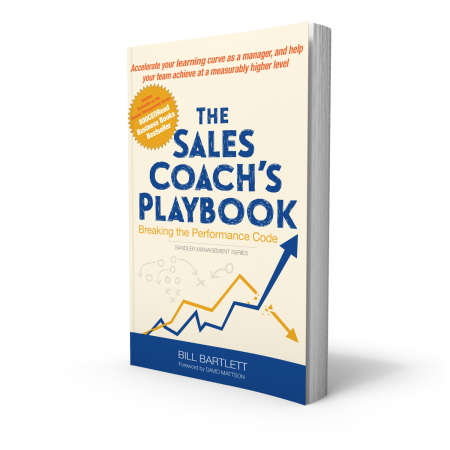Learn how to unlock the code for maximizing performance!
Many organizations underestimate the importance of the coaching role, misunderstand the definition of coaching, and consistently underperform as coaches or entirely omit the process. As a result, this leads to stress, burnout, and less-than-optimal performance of the leader and the entire team.
If so, you are not alone. Every leader eventually comes face-to-face with one or more of these challenges.
The question becomes, “How will you learn overcome them?”
Clients who have worked with us to strengthen their “coaching muscle” report significant improvement to their culture, performance ratings, and bottom line.
Your ability to find and hire the best salespeople, then accurately evaluate their performances and motivate them, affects your team’s ability to succeed. Outstanding sales performance requires a realistic sales plan, including goals and the strategies for accomplishing them. Learn to effectively and supportively debrief your salespeople, grow your sales through networking, and manage a territory, while developing the best practices vital to managing, maintaining, and maximizing business with existing customers.

A recent study found that few sales managers spend time coaching, and when they do it's generally ineffective, failing to get desired results. The Sales Coach's Playbook: Breaking the Performance Code, by Sandler trainer Bill Bartlett, answers the question of 'Why?' and offers a specific, actionable plan based upon the award-winning Sandler Selling System.
Coaching is a formal process that uses one-on-one meetings to help team members discover hidden issues that inhibit their performance. For coaching to be effective, the discovery process must focus on critical behavior modification, not the imparting of new skills. Every coaching session should have a strategy or game plan designed to achieve the desired result.
Coaching fails when one or both participants enter the session spontaneously with no goal or plan for success. Contrary to popular belief and practice, effective coaching is not just “showing them how to do it.” Your people can learn to succeed when you develop a coach’s playbook for maximizing their performance!
In this Chapter, you will learn the importance of coaching and why managers must use coaching to help team members grow. This Chapter also covers the Sandler coaching philosophy and shows how it is integrated into a larger commitment to leadership.
In this Chapter, you will learn how to identify and counteract self-limiting beliefs. The effective coach must deal with the self-limiting beliefs in themselves and the team members, preventing them from executing new, higher performing behavior.
In this Chapter, you will explore how successful team members come to accept the need to change. Most team members are resistant to change and choose to remain stuck. The effective coach breaks through this comfort zone to help team members reach their potential for greater success.
In this Chapter, you will learn how to conduct an “X-ray” to determine what’s going on in the team member’s world—and why. This is an essential prerequisite to effective goal setting, which is a central element to coaching success. You will also learn why the team member and coach must work together to identify and pursue goals if they are to achieve success.
In this Chapter, you will learn the importance of setting ground rules for the coaching engagement that create an environment of trust and comfort for both the coach and the team member. Additionally, you will learn about psychological factors that influence the success of coaching sessions.
In this Chapter, you will explore the importance of establishing a coaching process. Effective coaching is not performed as a “one and done” model; rather, it is a tool for continuous improvement, with the coach always responsible for creating a positive coaching experience and the environment as the process moves forward. There are two kinds of coaching that support this continuing improvement: strategic and tactical.
In this Chapter, you will learn ways to access team members’ personal motivation for changing behavior and raising their performance. Coaching fails whenever the coach takes ownership of the team member’s growth—instead of using coaching to ignite the team member’s personal passion.
In this Chapter, you will learn to utilize the skills that are critical to creating a successful coaching environment. To achieve the desired result of each coaching session, the coach must rely on a well-stocked toolbox. These tools, or skills, help the coach elevate a simple conversation between manager and team member to a productive interaction where both parties achieve their goals. The toolbox must be customized to fit the coach’s personality and practiced continuously to raise effectiveness.
In this Chapter, you will learn how and why negative thoughts tend to limit performance, while positive thoughts tend to drive greater success. Many team members develop limiting behavior patterns. Often, these are driven by the subconscious thoughts they have developed over the course of their careers. Subconscious thought patterns are often derived from negative or positive past experiences. These patterns can build up over time to create behavior blockages.
In this Chapter, you will learn about the traits all high-performance coaches share and the ways these traits affect coaching success. The effective coach builds a coaching framework and style specific to the personality of the team member. Coaching, as discussed earlier in this course, is not a “one size fits all” discipline.
In this Chapter, you will learn how effective coaching must have a cadence, focusing on regular sessions that reinforce one another—and become part of the manager’s own behavior plan. Successful coaching is based on a practical methodology and techniques consistently modeled by the coach to achieve the desired goal.
In this Chapter, you will learn ten best practices to incorporate in the coaching process that will help all managers raise their coaching performance.